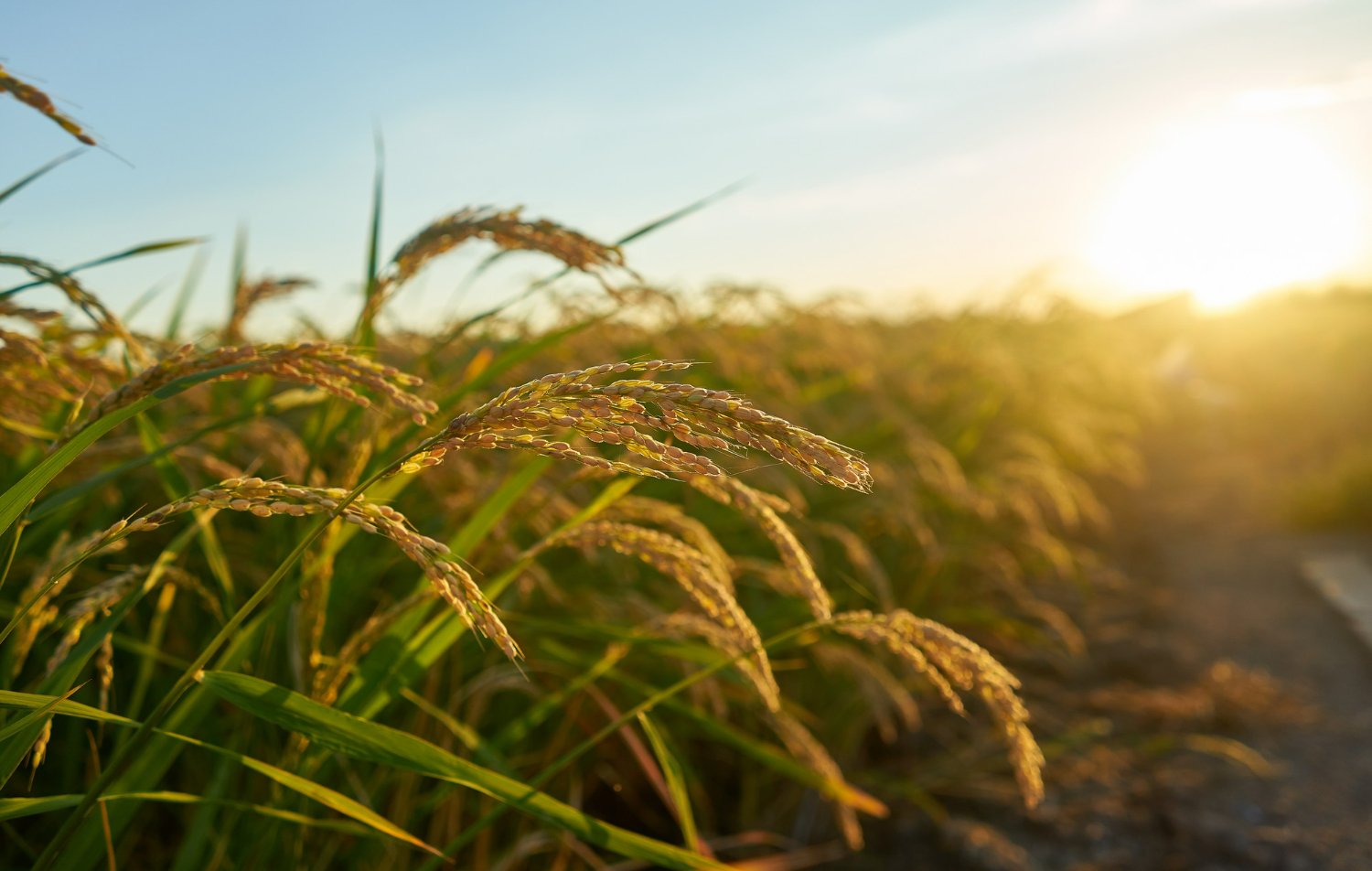Rice is the seed of either the monocot plant Oryza sativa (also known as African rice) or the dicot species Oryza glaberrima (African rice). Cereal grain is a staple food for a large percentage of the global population.
According to the data available for the year 2010, the grain has the second-highest production worldwide after maize – Corn. In terms of human nutrition and calorie consumption, rice is the grain that is considered to be the most significant. It is the source of the calories that are consumed by the human species on a worldwide scale.
Rice was first cultivated in China’s Pearl River valley between 8,200 and 13,500 years ago. Its origins may be traced back to a single domestication process. According to many archaeological digs, rice appears to have been domesticated in the Yangtze River Valley region of China. Rice’s distribution began in East Asia and continued across the remainder of Asia. It was brought to Europe by way of Western Asia, and it was transported to the Americas by a form of European colonialism.
Rice is an important meal and a rich source of proteins. However, it does not by itself constitute a complete protein. Because it does not contain all of the required amino acids in enough quantity for optimal health, it has to be combined with other sources of protein, such as nuts, beans, lentils, seafood, and the like.
Rice, like corn or wheat, may be puffed or popped to create a different texture.
Nutrient value per 100 gm is:
Energy | 1,527 kJ (365 Kcal) |
Carbohydrates | 80 gm |
Sugar | 0.12 gm |
Dietary fiber | 1.3 gm |
Proteins | 7.13 gm |
Water | 11.61 gm |
Fat | 0.66 gm |
Supplemental nutrients beyond those listed above include:
Thiamin (Vit B1) | 0.0701 mg (6%) |
Riboflavin (Vit B2) | 0.0149 mg (1%) |
Niacin (Vit B3) L | 1.62 mg (11%) |
Pantothenic acid (Vit B5) | 1.014 mg (20%) |
Vitamin B6 | 0.164 mg (13%) |
Calcium (Ca) | 28 mg (3%) |
Iron (Fe) | 0.80 mg (6%) |
Magnesium (Mg) | 25 mg (7%) |
Manganese (Mn) | 1.088 mg (52%) |
Phosphorus (P) | 115 mg (16%) |
Potassium (K) | 115 mg (2%) |
Zinc (Zn) | 1.09 mg (11%) |
A total of 17 Asian and Pacific countries, 9 American and South American countries, and 8 African nations depend on rice as their primary source of nutrition and calories.
The arsenic in rice and rice products is a Group 1 carcinogen and a known toxin. Some types of rice have more arsenic per serving than water (5 ppb in 1 liter of water vs. 5 ppb in 1 plate of rice).
Although total rice production is variable, most of it is comprised of Brown rice and is cultivated on fields that were initially used to grow cotton. The EPA suggested a limit of 5 ppb for drinking water in the United States, but in 2012, the limit was raised to 10 ppb.
U.S. Food and Drug Administration (FDA) is expanding it even more. The level of arsenic in rice in China cannot exceed 150 parts per billion.
Domestication and cultivation of rice:
Asia:
Genetic results presented in PNAS revealed that all types of Asian Rice (Indica and Japonica) derive from wild rice Oryza rufipogon domesticated 8,200-13,500 years ago in China.
China, India, Indonesia, Vietnam, Bangladesh, Pakistan, Philippines, Myanmar, Thailand, and Japan are essential rice producers.
Rice is the primary diet for all ethnic groups in Sri Lanka. The state mainly grows rice. The primary growing season is ‘Maha’ (October to March), while the second is ‘Yala’ (From April to September).
Africa
3,500 years ago, Africa began growing rice. 1500-800 BC From the Niger River Delta, Oryza glaberrima spread to Senegal. Asian species spread west from East Africa. African rice ended the 1203 famine.
Europe
Iran, Egypt, and West Asia exported rice to the ancient world. Roman Camps in Germany had large rice deposits from the first century A.D. Alexander the Great’s army returned from Asia with rice. 10th-century Moors imported Asiatic Rice to Iberia. This Valencia and the Country’s biggest rice.
Christian conquest ended rice farming in Majorca. Sicily had rice before 1475. Duke Ludovico Sforza promoted its cultivation in his model farms. After 1500, Italy and France grew rice. In European Russia, Krasnodar Kari rice was termed ‘Kuban rice.’
Syria
Southern Iraq grew rice. Islam brought it to Nisibin. It reached Iran’s southern Caspian Sea beaches and the Volga valley from the north. Egypt’s Nile Delta grows rice. Jordan Valley brought rice to Palestine. Al-Hasa Oasis and Yemen also cultivate rice.
Australia:
British Settlers with expertise in America and the subcontinent were among the first to harvest rice in Australia.
U.S.
Colonial South and Georgia got rich on slave labor from Senegambia and Sierra Leone.
At the port of Charleston, where 40% of American slave imports traveled, slaves from this part of Africa brought the best prices because of their past expertise in rice culture.
1964 brought Madagascar-origin rice to South Carolina. Arkansas, Mississippi, Missouri, Louisiana, Texas, and California produce more than 100 rice types.



